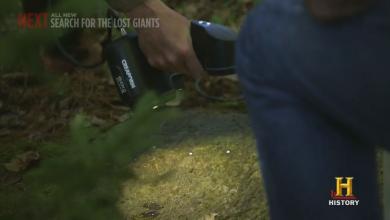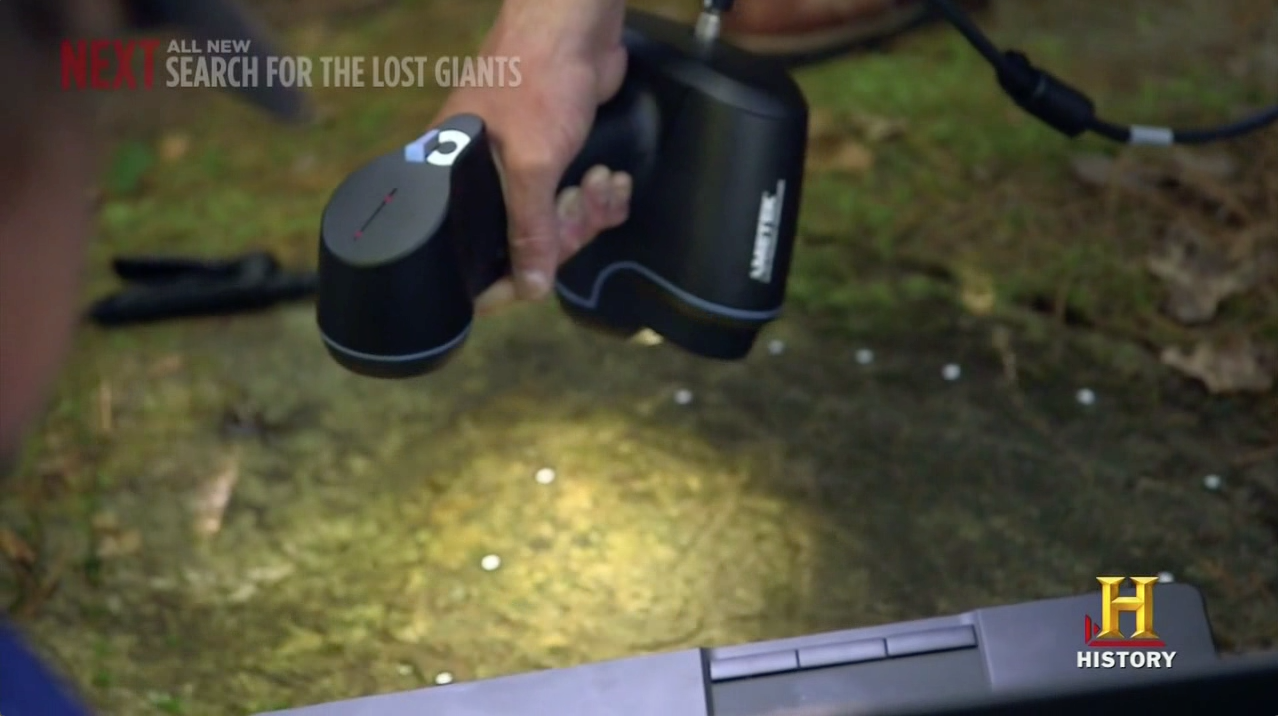September 13, 2024
The Impact of 3D Scanners on NASCAR Stock Car Racing See the article
Presented above are screen captions from the History Channel series Curse of the Oak Island. It clearly shows a Creaform Go!SCAN 50 handheld 3D scanner used to digitize a mysterious petroglyph, or rock engraving.
The Curse of the Oak Island
Oak Island is located just off the Atlantic Coast of Nova Scotia, in Eastern Canada. Its size is only 57 hectares, and apart from many trees (including yes, oaks) and a few rocks, it doesn’t seem anything out of the ordinary… Except that it’s been where one of the most intriguing and mysterious treasures hunts in the world has taken place, and this, since 1795. Much documented in fiction and through the famous people who were linked to it (including US President Franklin D. Roosevelt), the island is believed to conceal an incredibly valuable treasure, presumably hidden by pirates in the 18th century.
Try as they might, no one ever found this treasure though, even after over 200 years of searching, millions of dollars invested, and 6 lives claimed. That is the “curse” part: according to an ancient legend, 7 people will have to die before the treasure can be found –meaning one death may be yet to come!
Most recently, brothers Rick and Marty Lagina purchased most of the island, having been fascinated by the place since their childhood years. It’s their quest for the treasure and its historical heritage, as well as the solving of this old mystery, that the History Channel series documents.
The episode in which the handheld 3D scanner Go!SCAN 3D appears is called Return to the Money Pit, after an aptly named manmade excavation discovered centuries ago on the island. Dug many times by several different teams of anthropologists, historians, and archeologists, the pit never gave away its potential secret, only letting in tantalizing clues as well as booby traps that ended every attempt in flooding.
Other interesting and puzzling ancient historical artifact discoveries were made on the island over the years, including the petroglyph the portable 3D scanner Go!SCAN 3D was used for, representing an 8-pointed star surrounded by a circle, with small crosses between each branch. Expert J. Hutton Pulitzer, brought in to assist in the hunt, explained in the episode that the symbol can be found throughout Ancient History in the Middle East, and is linked to the Holy Land. Another layer of mystery!
A 3D model representing the petroglyph
The 3D scanner Go!SCAN 3D impresses
In the episode, Marty Lagina was impressed by the Creaform technology, remarking that Pulitzer “has the most interesting gizmos… What a great thing, to be able to scan an inscription and then turn it to the inverse, flip it around and manipulate it.”
Indeed, with its small size, incredible ease-of-use, and quick color results, the portable 3D scanner Go!SCAN 3D has proved to be the ideal researchers and archeologists tool, helping anyone working in the Heritage Preservation field. As shown in the episode, it can be carried right to the field and used virtually anywhere to obtain a real-time, accurate 3D model of numerous objects and artifacts.
What’s next?
Stay tuned for more on this fascinating story! At the end of the History Channel documentary series, the modern treasure hunters sent a sonar device 200 feet below the Money Pit chamber. What it revealed was enough to relaunch the wildest speculations: at its bottom, the chamber pretty much follows a rectangular shape, and contains two large solid rectangular objects.
You can watch the episode here (only available to US citizens as per History Channel’s specifications). In the footage, the Go!SCAN 3D is presented around the 37th minute.
Image credit: History Channel, Oak Island and Money Pit










